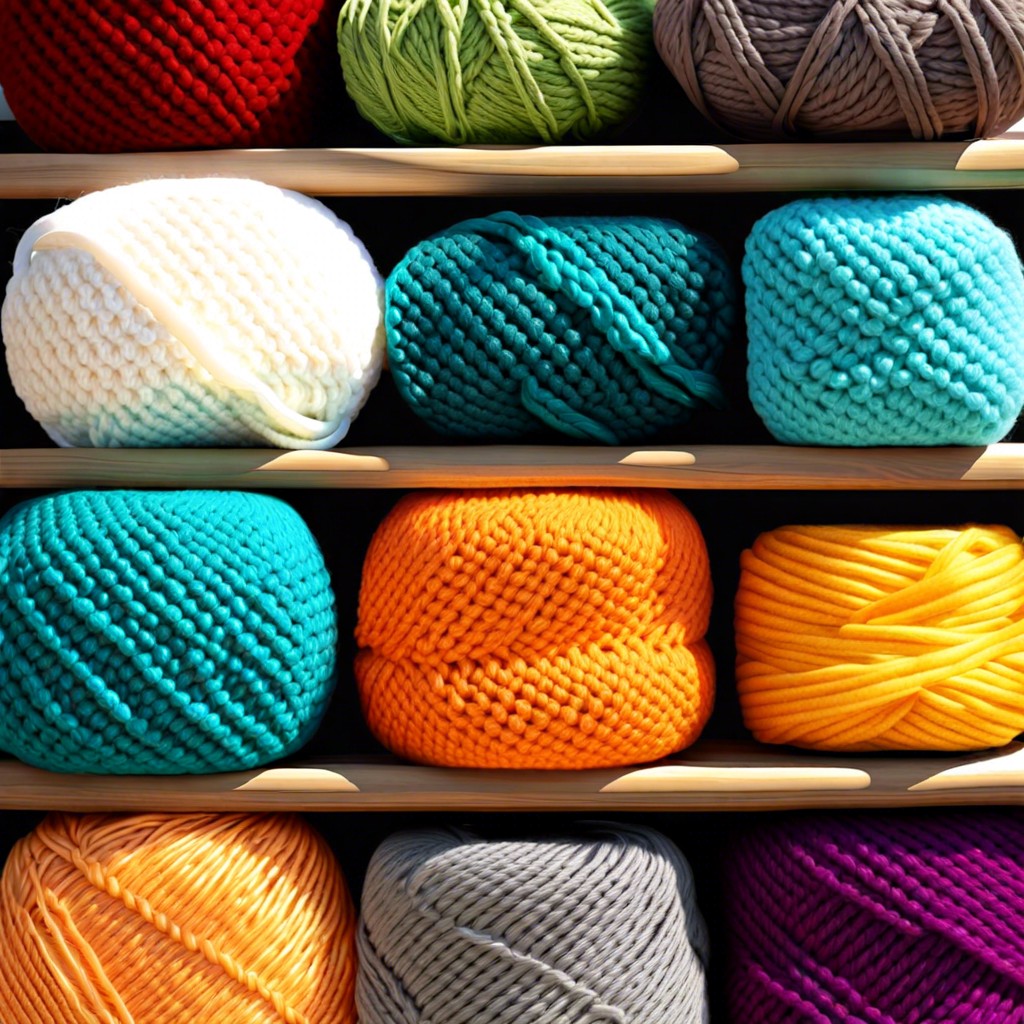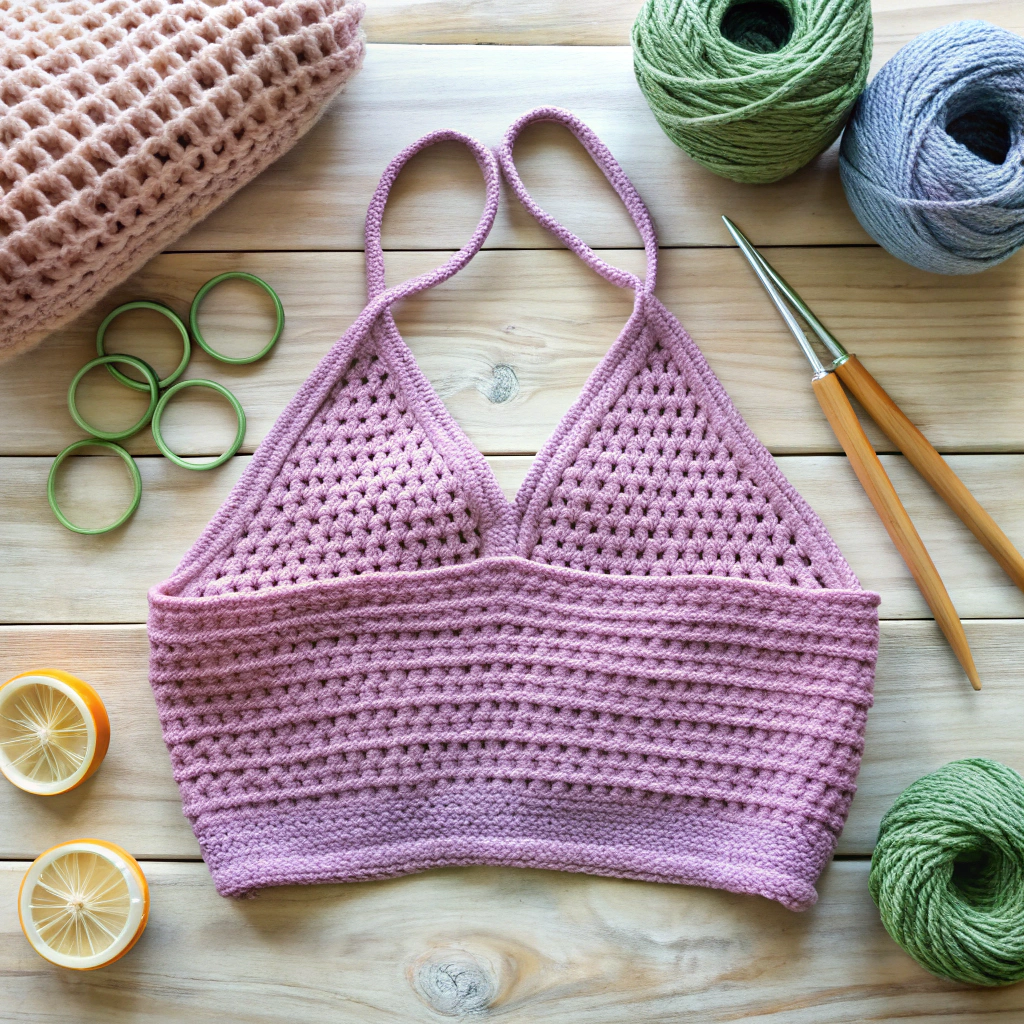Learn how to master the puff stitch crochet, adding texture and flair to your projects with ease and creativity.
Ready to dive into the mesmerizing world of the puff stitch in crochet? This article will make you a puff stitch pro in no time, guiding you through selecting the perfect yarn and hook, nailing that foundation chain, and mastering the art of creating those plump, textured beauties. Say goodbye to lopsided loops and hello to uniform, elegant stitches!
Key takeaways:
- Choose the right materials: medium-weight yarn, appropriate hook size.
- Start with a proper foundation chain: even and not too tight.
- Yarn over and draw up a loop to create puff stitches.
- Draw the yarn through all the loops for a cohesive stitch.
- Maintain even tension, count loops, and give stitches space.
Materials

Let’s talk about what you need. First off, yarn. Soft, squishy, colorful yarn. Aim for a medium-weight yarn for best results. Think yarn that’s not too thick, not too thin, just right—like a Goldilocks dream.
Next up, a crochet hook. You’ll want a size that matches your yarn. Medium yarn usually pairs well with a size H (5.0 mm) hook. Ever tried crocheting with a toothpick and shoelace? Avoid that experience.
Add in a pair of good scissors for snipping ends. No one needs to wrestle with dental floss.
Lastly, a yarn needle. This little tool will weave in ends, tidying up your masterpiece. Imagine trying to thread a camel through the eye of a needle. Fun in theory, chaos in execution.
And that’s it. Onward to puff stitch glory.
Tools
Grab yourself a trusty crochet hook to get started. A 4.5mm (Size 7) or 5mm (H/8) hook is a great choice for puff stitches, offering just the right balance.
Opt for smooth, medium weight yarn. Think worsted or aran weight. These babies slide nicely on the hook and create lovely, plump stitches.
Keep a pair of sharp scissors handy. No one enjoys frayed ends. A good tape measure is also helpful if you’re venturing into projects where size really does matter.
Finally, a tapestry needle will make weaving in your ends a breeze, saving you from those pesky loose loops. Simplicity meets fun!
Make a Starting Chain
To get started, you’ll need to make a foundation chain. This creates a base for your puff stitch to rest on.
- Begin with a slip knot on your hook. Ensure it’s snug but not too tight, like a handshake with Goldilocks.
- Chain the desired number of stitches. Each chain should be even, like soldiers standing in line, but not too tight, or they might faint!
Remember, the chain length determines the width of your project. If you make it too short, your blanket might end up as a fancy coaster. If too long, well, you could accidentally crochet a scarf as long as Rapunzel’s hair. Choose wisely and stitch confidently.
Yarn Over and Draw Up a Loop
Now, here comes the part where you start forming those lovely puff stitches.
– Yarn Over (YO): Wrap your yarn over the hook. Not once, but twice. Yes, twice. Think of it as giving your hook a cozy little hug.
– Insert Hook: Poke that hook through the next stitch on your chain. Go ahead, be brave!
– Draw up a Loop: Pull the yarn through the stitch. Voilà, a loop is born! But wait, don’t stop now.
– Repeat YO and Pull Through: Yarn over again and draw up another loop through the same stitch. Keep doing this until you’ve got a bunch of loops on your hook. Five or six will do, but feel free to go wild.
Remember, it’s like stacking fluffy pancakes on your hook, except fewer carbs and more fun.
Draw the Yarn Through All the Loops
Time to wield your crochet hooks like a wizard casting a spell!
First, yarn over and you’ll have several loops on your hook, looking like a mini yarn roller-coaster. Now, the tricky bit: gently coax your yarn through all those loopy hoops in one smooth motion. It’s like threading a needle, but with more fiber and flair.
- Remember:
- Keep your tension consistent. Tight loops? You’ll need Hulk strength to tug the yarn through. Too loose? Your puff stitch becomes a sad little balloon.
- Gentle yet firm. It’s a balance, like carrying a delicate soufflé.
- Practice patience. Your first few tries might feel like a yarn-tangling disaster. Deep breath. You’ve got this!
Crochet on, fabulous fibersmith, and puff stitch your way to glory!
Work Puff Stitches Across the Row
Once you’ve mastered that first puff stitch, you’re ready for the fun part—playing leapfrog with your crochet hook across the entire row. Here’s how to keep the rhythm:
Keep an even tension for uniform stitches. Think of it as Goldilocks tension—not too tight, not too loose, but just right.
Count your loops carefully before drawing through them all; miss one, and it’s like losing your place in the middle of a great mystery novel. Frustrating!
Give the yarn a gentle tug to snug up the stitch after pulling through all the loops. But remember, we’re not arm-wrestling the yarn here, just a friendly handshake.
Maintain consistent spacing between stitches. Puff stitches need their personal space, like strangers on an elevator.
Every puff stitch is a tiny cloud in your crocheted sky, so keep it soft and pillowy, and you’ll love the end result.
Tips and Tricks for Perfect Puff Stitches
Keep your tension consistent to avoid lumpy or loose puff stitches. Good tension gives puff stitches their puffiness, without making them too floppy or too stiff. Think “Goldilocks tension”—just right!
Try using a hook one size larger than usual. This can make it easier to pull through multiple loops, especially if your yarn tends to be a bit sticky or if you prefer a looser stitch.
Practice makes perfect. Doing puff stitches might feel awkward at first, like trying to pat your head and rub your tummy simultaneously, but with time it’ll become second nature. In no time, you’ll be puffing like a pro!
Count your loops. Always double-check the number of loops on your hook before pulling through. It’s easy to lose track and end up with a puff stitch that looks more like a deflated balloon.
Mind your yarn type. Some yarns are better suited for puff stitches. Generally, a smooth yarn glides effortlessly through loops, whereas textured yarn might make it a bit trickier.
Use stitch markers. They can help keep track of where you’re supposed to be, rather than unraveling your work to find out where you went rogue.




